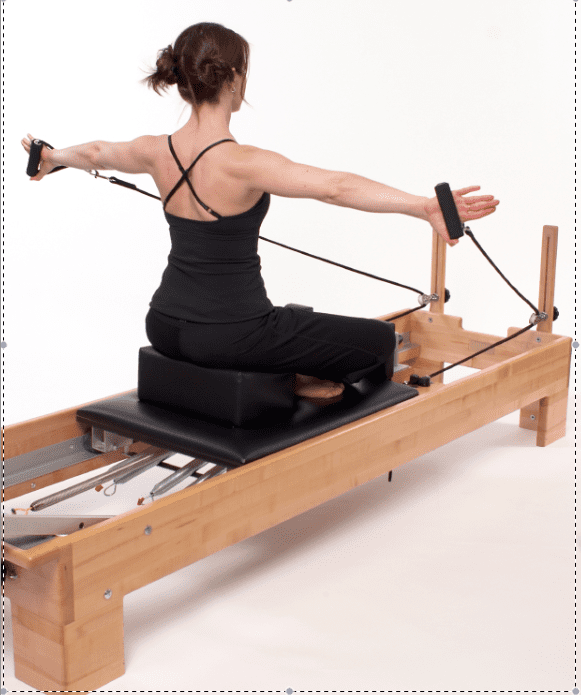The Pilates Method Alliance (PMA), a not-for-profit professional organization for Pilates, points out that more Americans are practicing Pilates as a way to condition their bodies and improve their physiques. Pilates, a low-impact exercise program appropriate for women of all ages and fitness levels, involves a succession of smooth movements, which integrate both stretching and breathing exercises. Developing a pattern of slow, deliberate movements along with controlled breathing increases blood flow to the muscles providing a number of fitness benefits.
ROM
Pilates works to improve range of motion (ROM) through stretching and breathing exercises, which focus on muscles that support the spine. With Pilates you become more aware of your body and how to control its movements. Maintaining proper skeletal alignment helps to relieve tight muscles, thereby improving joint mobility. In a study conducted by Canadian researchers in Vancouver, British Columbia, to examine the effects of Pilates exercises on ROM, a regular program of Pilates exercises was shown to improve shoulder ROM in women who had been treated for breast cancer.
Flexibility
Increasing flexibility and strengthening muscle tissue helps to release deep muscle tension. The stretching movements of Pilates provide gentle decompression of the spine and weight bearing joints. Pilates provides a full body workout that leads to leaner muscles and strong, flexible joints. According to members of the American Physical Therapy Association (APTA), stretching muscles to improve flexibility prevents straining the muscles and joints that support the back. Physical therapists maintain that stretching helps to build a balanced core. In the same way, Pilates exercises are based on developing core strength to stabilize the trunk. Strengthening and tightening the weaker deep muscles of the abdomen and spine helps protect the back and keeps the center of the body strong. Pilates exercises are now being used in fitness classes, wellness centers and physical therapy clinics across the nation.
Posture
According to the American Academy of Family Physicians (AAFP), poor posture is often the cause of back pain. Doctors say that learning correct posture alleviates strain on the back, preventing many back problems. Proper posture can have positive effects on other areas of the body as well, including the lungs. When you stand straight, the diaphragm can expand the way it should so that you can breathe with less effort. Practicing Pilates techniques helps to improve posture, balance and coordination. Pelvic and spinal alignment focuses on muscles of the torso, which can help ease back and neck pain. For ideal alignment when you are standing, your ears, shoulders, hips, knees and ankles should be in a straight line. Walk with your back and shoulders loose, your arms relaxed and swinging freely at your sides. The goal of Pilates is to work the entire body, not just certain muscle groups.





